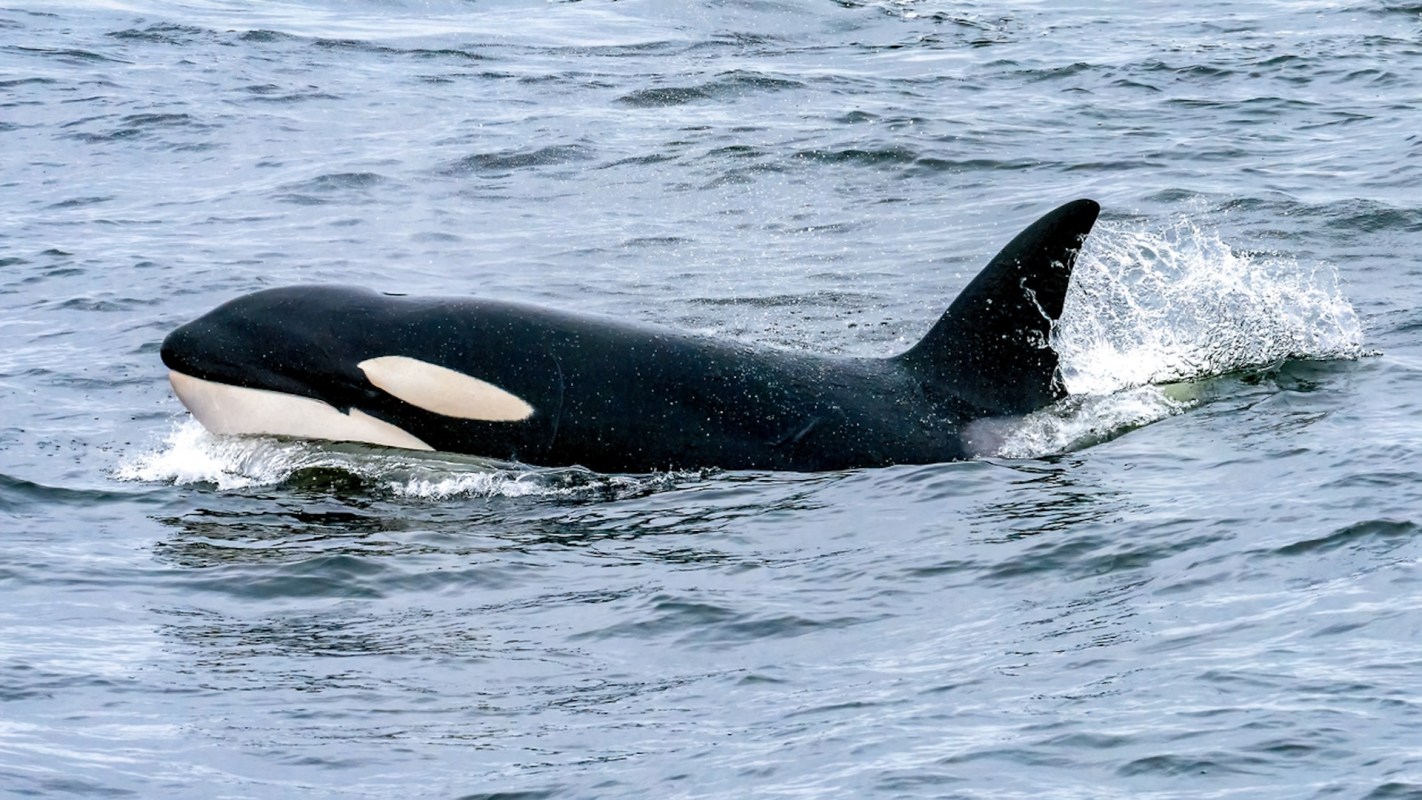A critically endangered population of orcas is getting help after some astute observations and out-of-the-box thinking by scientists.
The New York Times reported that veterinarians are inching closer to providing individualized care for Southern Resident killer whales thanks to a combination of specialized drones, infrared cameras, and directional microphones that can pick up the sound of their breathing.
"When we started out, it was a pretty far-fetched idea to say, 'We're going to do veterinary exams on wild, free-swimming orcas, and they won't even know we're doing it.' It's not far-fetched anymore," Dr. Hendrik Nollens, the vice president of wildlife health for the San Diego Zoo Wildlife Alliance, told the outlet.
Scientists had already had success monitoring larger whales with drones used to collect breath samples, but because orcas release smaller clouds of mist from their blowholes, the technology reportedly had to be adapted with the help of computational modeling.
Experts at the San Diego Zoo Wildlife Alliance tested a prototype at SeaWorld and on other whale populations with success before deploying an upgraded drone-petri dish combo on the orcas, enlisting the help of identification expert and scientist Maya Sears.
Ultimately, a test allowed researchers to assess a specifically selected orca for bacterial and fungal infections and conclude that unusual readings were likely the result of a minor injury that resolved itself.
Southern Residents, which swim in the Pacific waters off the United States and British Columbia coast, have been on the endangered list since 2005, and now, roughly 75 of the marine creatures remain.
"We're in a dire, dire situation," said Dr. Joe Gaydos, the science director of UC Davis marine conservation program SeaDoc Society. "We're at that point where the health of every single individual is important."
Like with other orca populations, pollution has contributed to the Southern Residents' fight for survival. Boat traffic and declining numbers of salmon have also negatively impacted the orcas, but there are factors under investigation, per the Times.
The National Oceanic and Atmospheric Administration listed lingering chemical contaminants as one major point of concern, and the effects of microplastics are still being looked into. According to the International Union for Conservation of Nature, 14 million tons of plastic find their way into oceans every year.
While changing our relationship with plastic can reduce the amount of waste polluting our waters, scientists are hopeful that their new tools will further aid conservation efforts and lead to more knowledge about how to help the Southern Residents.
"We're not at the point yet that we could say, 'Oh, and here's my diagnosis, and here's my prescription and treatment,'" Dr. Nollens explained to the Times and added that the scientists' ability to quickly evaluate an orca in the wild was an important "milestone."
Join our free newsletter for cool news and cool tips that make it easy to help yourself while helping the planet.








